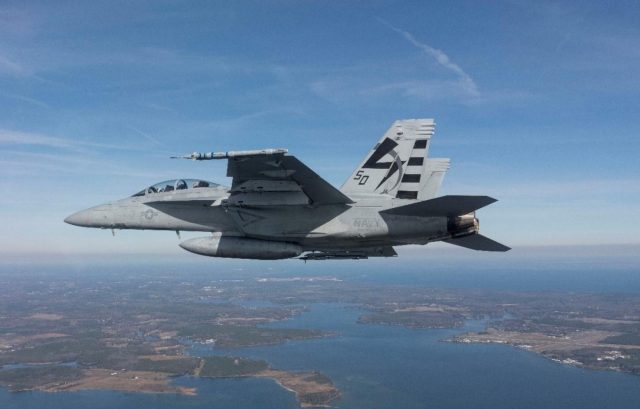
The US Navy has completed the first flight of its new air combat training system, the Tactical Combat Training System Increment II (TCTS II), on an F/A-18F Super Hornet at Naval Air Station Patuxent River.
The second flight test, the first for this system involving two aircraft, followed in quick succession using two F/A-18Es.
Developed and built by Collins Aerospace Systems and teammate Leonardo DRS, TCTS Inc. II is a scalable and flexible open architecture system that enables highly secure air combat between navy and air force aircraft.
The air force joined the navy’s TCTS II program, leveraging investments made by the navy. The services are working together to develop and use this system to train against real-world threats.
According to the navy, TCTS II is the first certified encrypted, multi-level security training pod that communicates with both airborne and ground equipment.
The system allows pilots to ‘train as they fight,’ connecting the aircraft to the training space (other aircraft, ground, sensors, and threats) for a realistic training experience. This capability improves training realism in simulated, highly contested combat environments.
TCTS II also features synthetic inject to live (SITL) capabilities which connects the live aircraft with synthetic sensors and threats to training in a more realistic environment.
“This is the first time the team has been able to see the system in use in a real-world environment using an operational platform. These tests provide valuable insight into system performance, including pod-to-pod and pod-to-ground datalink performance, positional accuracy, and weapon simulations,” said Jake Kiehlmeier, PMA-205 TCTS II lead test engineer.
The December flights, which are part of the developmental test phase, are expected to pave the way for the program to achieve Milestone C production decision by the end of 2021.


























